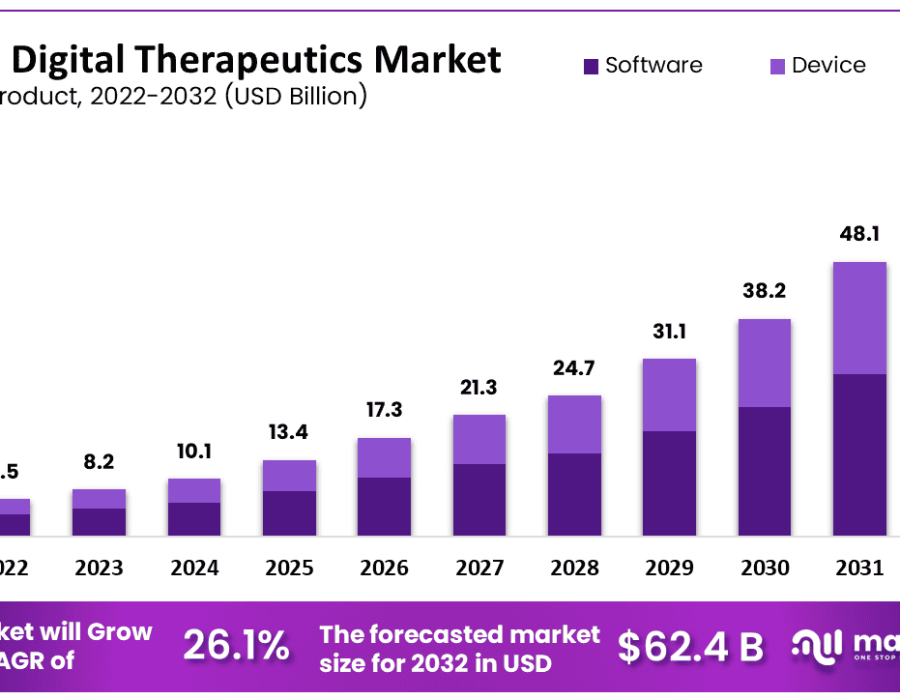The Global Digital Therapeutics Market is expected to grow from USD 6.5 billion in 2022 to USD 62.4 billion by 2032, at a CAGR of 26.1%. This rapid expansion is driven by the growing burden of chronic diseases like diabetes and heart conditions, which require continuous monitoring and lifestyle management. Digital therapeutics offer personalized, cost-effective solutions with real-time support and remote care. The aging population further boosts demand, as these tools allow elderly patients to manage their health from home. The COVID-19 pandemic accelerated adoption, as patients and providers turned to mobile health platforms and telemedicine. Widespread smartphone use has since sustained this trend, expanding access to therapy tools even in remote areas. Government initiatives, global health organization support, and increased insurance coverage have strengthened trust in digital therapeutics. As a result, they are becoming a key part of modern healthcare, reshaping how care is delivered worldwide.
Emerging Trends
- Rise of Prescription Digital Therapeutics: Some countries now allow certain digital apps to be prescribed like traditional medicine. These are mostly used for managing conditions such as addiction, diabetes, and depression, where software replaces or complements drug therapy.
- Growing Use of Wearables: Wearable devices such as smartwatches and sensors are now part of many digital therapy solutions. They track things like heart rate, movement, and sleep, which helps personalize treatment and give real-time feedback to users and doctors.
- Supportive Government Policies: Health authorities in many regions are starting to support the use of digital therapeutics through new regulations and pilot programs. This includes steps toward making digital therapies reimbursable through insurance or public health systems.
- Emphasis on Data Privacy: As digital tools collect sensitive health data, there is growing focus on making sure information is stored securely and shared responsibly. Companies are working to meet data protection laws and earn patients’ trust.





Comments